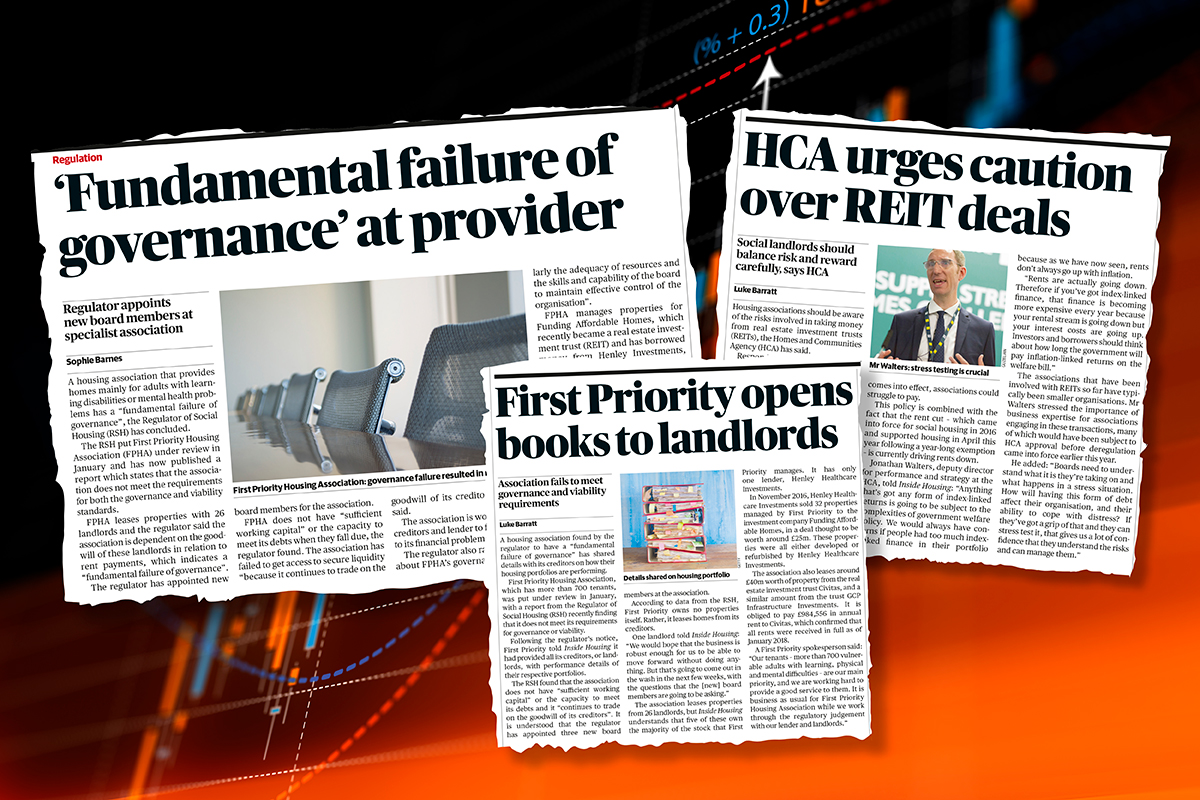You are viewing 1 of your 1 free articles
Two private equity-linked housing associations had First Priority-style void rates
Housing associations with business models similar to that of an association censured by the regulator for a “fundamental failure of governance” also had numerous homes lying empty, figures relating to the past financial year show.
First Priority was declared non-compliant with the regulator’s standards in February, with an Inside Housing investigation into what went wrong published this morning.
Since February, the Regulator of Social Housing (RSH) has opened investigations into four associations with similar business models to First Priority: Westmoreland, Inclusion, Trinity and Encircle.
The regulator has declared Trinity non-compliant with its standards on governance and financial viability, saying it is “potentially putting its tenants at risk”.
The other three investigations are ongoing.
One of First Priority’s creditors told Inside Housing that its “number one” problem was a high percentage of homes lying empty and therefore not receiving rents – also known as the void rate.
Jonathan Walters, deputy director of strategy and performance at the RSH, also said the void rate was central to the problems at First Priority.
He said: “You simply cannot manage a cash flow-based lease business with a 35% void rate. You simply can’t do that. When we talked about ‘a fundamental failure of governance’, that’s what we were talking about.”
According to the regulator’s Statistical Data Return (SDR), released two weeks ago, Westmoreland and Inclusion also had an unusually high percentage of empty homes.
The SDR revealed that as of 31 March 2018, 35% of Westmoreland’s homes were empty, well above the English average for supported housing of 4.7%. Inclusion’s void rate was also well above the average on that date, standing at 25.7%.
Both of these organisations said the rates had fallen since the SDR was released – and added that it was due to particular circumstances such as modernising properties, new development and end-of-year turnover.
Voids can be a particular problem for associations that have signed deals with private investors, as they do not own their own housing but lease it from private investment funds, and so need to collect rent in order to keep up with lease payments to the funds.
A spokesperson for Westmoreland said: “The figures refer to a period when we were developing our portfolio, including modernising properties, and this resulted in a high level of voids as we brought this additional capacity into use.
“We are progressing towards fuller occupancy and higher utilisation of this much-needed accommodation for people with care and support needs. We will continue to focus on reducing the void numbers over the coming months.”
Neil Brown, chief executive of Inclusion, said: “Turnover voids at the end of the year accounted for 7% of our stock; this is the underlying trend. The other 18% relate to new development voids that reflect healthy growth within the business during 2017/18, especially when calculated as a percentage of stock.
“A number of new developments were handed over in the last few months of the year; all have commissioner support and in the process of receiving referrals and being let. Overall voids have fallen since this figure was reported.”
Housing association financial statements 2017/18
Click on the links below to read more reports about individual associations' financial statements:
A2 Dominion reports £92.5m surplus
Aster sees 12% jump in surplus despite margin drop
BPHA sees surplus jump after shared ownership sales boost
Clarion's surplus falls for second year running
Housing & Care 21 records increased surplus
Metropolitan sees surplus fall due to post-Grenfell costs
Midland Heart records £47.8m surplus
Network Homes surplus dips for the second consecutive year
Notting Hill and Genesis post reduced combined surplus
Optivo sees turnover fall in first results since merger
Orbit surplus boosted by jump in value of private rented units
Paradigm surplus drops after £5.6m loan breakage cost
Places for People boosts surplus to £130m
Southern sees dip in surplus due to pensions and safety costs
Sovereign boosts surplus thanks to open market sales
Stonewater increases surplus by 38%
Swan surplus slides after £3.2m cladding provision
Vivid posts increased surplus post-Merger












